Have you ever wondered what a longnose gar vs alligator gar comparison would look like? With these two species being so similar, it’s easy to think they’re identical. However, no matter the similarities, both the longnose gar and the alligator gar are two separate species. They’re even in two separate genera!
To help you tell which gar is which, we’ve created this complete longnose gar vs alligator gar. Ready to learn just how different they are? Keep reading!
Comparing the Longnose Gar and the Alligator Gar
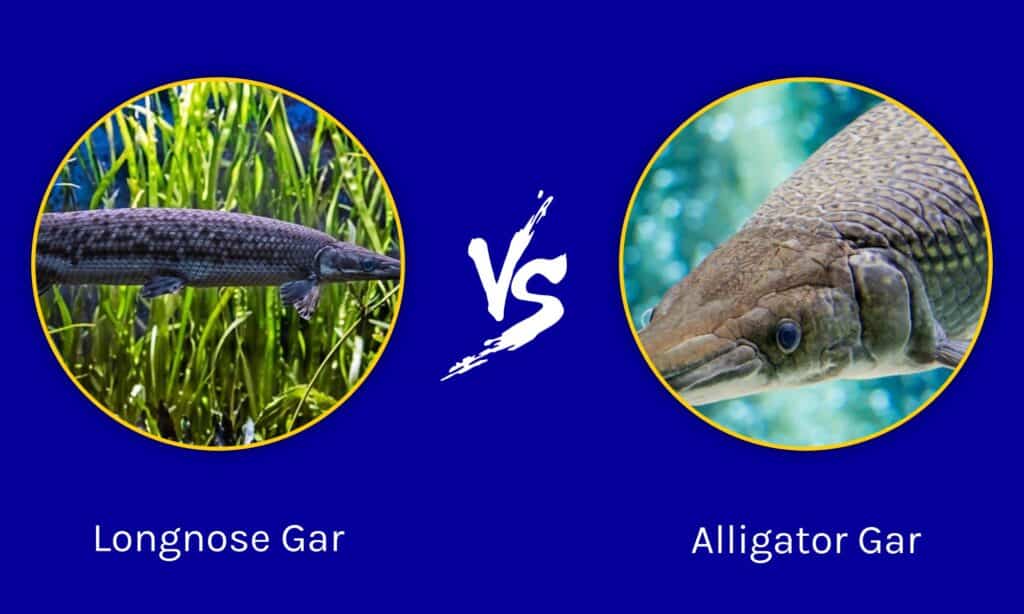
| Longnose Gar | Alligator Gar | |
|---|---|---|
| Taxonomy | Lepisosteus osseus | Atractosteus spatula |
| Habitat | Freshwater lakes, swamps, brackish waters, and slow-moving rivers and streams | Freshwater rivers, swamps, and marshes |
| Range | Southeastern and midwestern United States | Gulf of Mexico and surrounding river basins |
| Size | 2.5ft to 6.5ft | Around 10 feet |
| Weight | Up to 50 pounds | Up to 350 pounds |
| Teeth | A single row of small, sharp teeth | Two rows of sharp teeth |
| Diet | Small fish, crustaceans, and insects | Fish, crabs, waterfowl, small mammals, and turtles |
Longnose Gar Vs Alligator Gar: 5 Key Differences
The key differences between a longnose gar and an alligator gar are size, snout, teeth, diet, and taxonomy. The longnose gar is not only a different species from the alligator gar, but it is also in a different genus – although both are still in the gar family. Found in a wider range of habitats across the midwest and the eastern United States, the longnose gar is half the size of the alligator gar in both size and weight. In fact, in terms of size, the longnose gar can be as much as a third of the alligator gar’s length.
However, this is just a glimpse at what sets the longnose gar apart from the alligator gar. Keep reading as we dive into a deeper look at the top five key differences between the longnose gar vs alligator gar!
Longnose Gar Vs Alligator Gar: Teeth
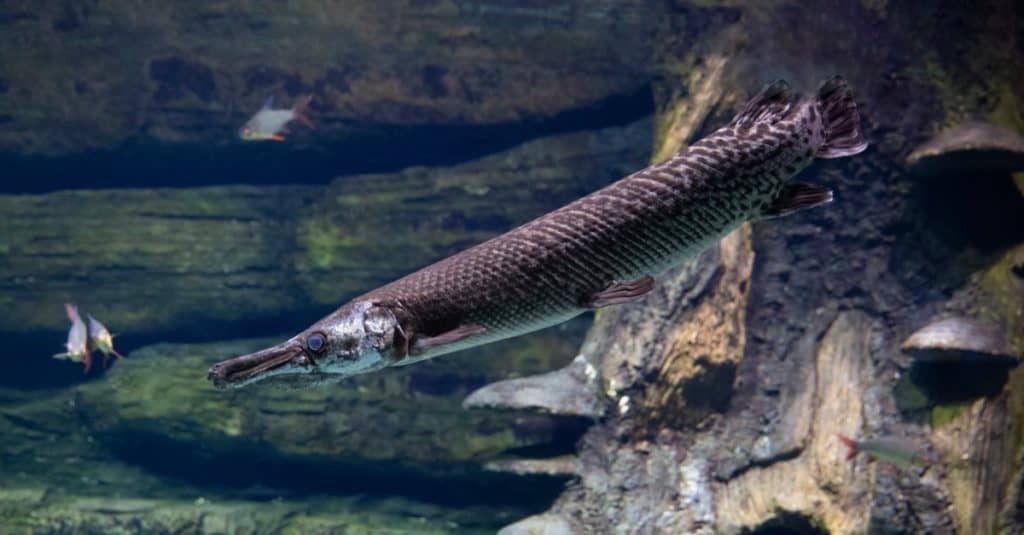
Longnose gar has a row of small, sharp teeth.
©ivSky/Shutterstock.com
The longnose gar has a single row of small, sharp teeth positioned close together. While the alligator gar has teeth of a similar shape and size, it has twice the amount thanks to having two rows of teeth. The inner row of teeth is much longer than the outer row, and it has sharp fangs to help hold its prey.
Just like the name “longnose” indicates the longnose gar’s long snout, there’s some truth to the alligator gar’s name as well – and it happens to be one of the key differences that set these two gar species apart. The longnose gar has a long snout in relation to body size than the alligator gar.
Longnose Gar Vs Alligator Gar: Diet
With a difference in teeth, it comes as no surprise that the alligator gar and the longnose gar have a pretty different diet too.
Both the longnose gar and the alligator gar eat small fish and crustaceans like crabs. However, the small longnose gar prefers to dine on insects, while the alligator gar has much larger prey on the menu.
Longnose Gar Vs Alligator Gar: Size
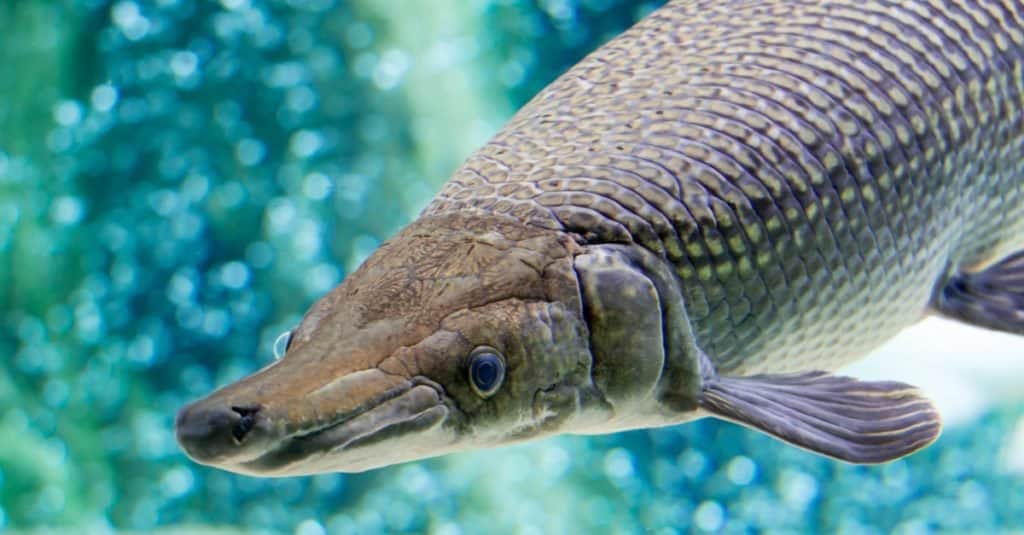
Alligator gars are some of the largest types of gar.
©Bill Roque/Shutterstock.com
The longnose gar can grow to be between 2.5 to 6.5 feet long. That’s around the same as a 7-year-old human child or two mini fridges!
However, reaching lengths up to 10 feet long (that’s longer than the average human!), the alligator gar is nearly three times the size of a longnose gar. The alligator gar also outweighs the longnose gar, with their 300-pound average maximum weight being more than that of the longnose.
Longnose Gar Vs Alligator Gar: Location
Both the longnose gar and the alligator gar are American freshwater fish. However, while there may be some overlap in their habitats, their locations differ greatly.
The longnose gar can be found in a large, diverse area. From swamps to rivers, you’re much more likely to stumble across a longnose gar when fishing along the east coast and in the midwest of the United States.
The alligator gar, however, is only found in the freshwaters around the Gulf of Mexico. This includes the streams or rivers in the nearby area.
Longnose Gar Vs Alligator Gar: Taxonomy
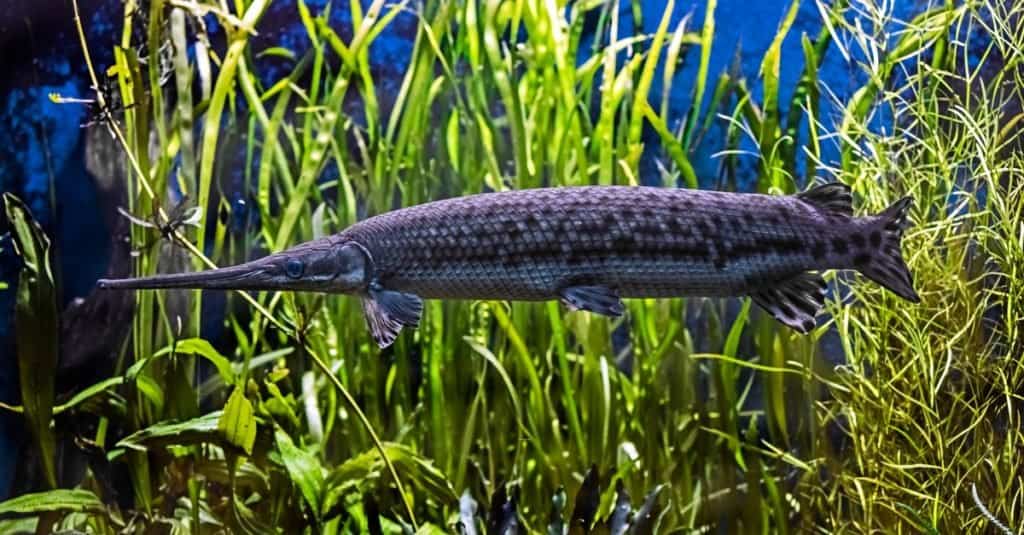
Longnose gars belong to the genus
Lepisosteus.
©Mikhail Blajenov/Shutterstock.com
Despite having similar names, the longnose gar and alligator gar aren’t just different species; they’re in entirely different genera! Both are in the same family of Lepisosteidae, which includes all gars, but the alligator gar is in the genus Atractosteus while the longnose gar is in the genus Lepisosteus.
The genus Atractosteus has three living species: the alligator gar, the tropical gar, and the Cuban gar. The genus Lepisosteus, on the other hand, includes four living species: the longnose gar, the spotted gar, the Florida gar, and the shortnose gar.
Conclusion
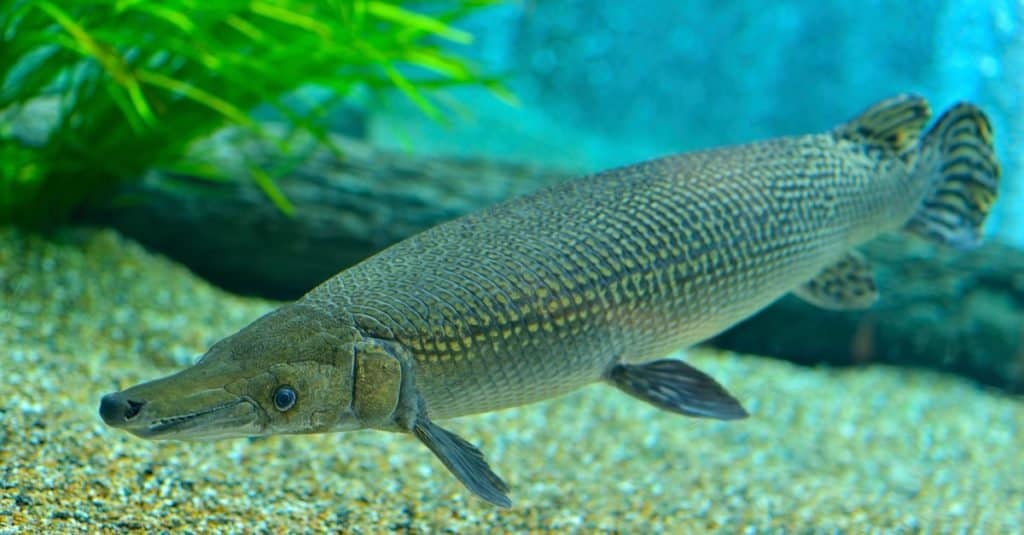
Alligator gars have a smaller habitat range.
©tristan tan/Shutterstock.com
With such similar names and appearances, and even a similar habitat, it can be easy to confuse the longnose gar for the alligator gar and vice versa. However, once you learn exactly what sets them apart, identifying them becomes much easier.
For instance, if you were to find one further west, it’s most likely a longnose gar. You can also check their teeth – if you’re brave enough to get close! Longnose gars only have a single row of sharp teeth, while the alligator gar has two.
Both the longnose gar and the alligator gar are important parts of their own habitats. They’re also only two examples of the diverse family that contains all gars.
The photo featured at the top of this post is © Mikhail Blajenov/Shutterstock.com
Thank you for reading! Have some feedback for us? Contact the AZ Animals editorial team.






